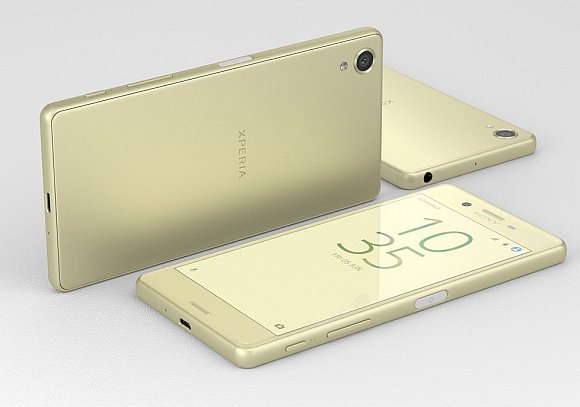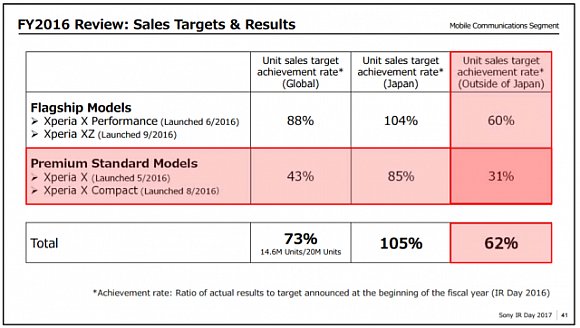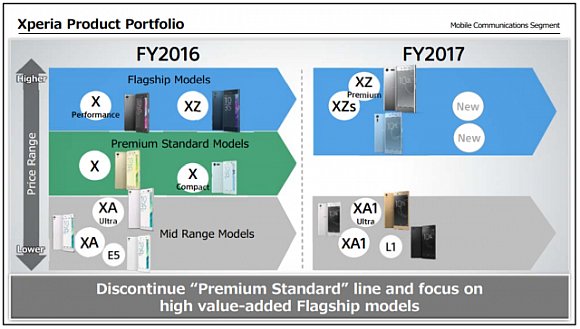Huawei—one of China's biggest smartphone manufacturers—is closer than it's ever been to entering the mainstream in North America. It's latest premium offering is the Huawei Mate 9 (MSRP $599), a big-screened phablet with top-shelf hardware and features borrowed from previous Huawei phones.
The Mate 9 is a phone with lofty aspirations—Huawei sees it as a competitor to the iPhone 7 Plus and the Galaxy S8, but with the added bonus of being a couple hundred dollars cheaper than its rivals.
Related
My Way or the Huawei: How to Pronounce Tricky Brand Names
Although the Mate 9 is absolutely worth the $600 price tag, there are still some sacrifices compares to pricier flagships. The Mate 9's software isn't very friendly and its dual, Leica-branded camera falls short of what we've come to expect from the best phones on the market.
For deal hunters who don't need the best phone money can buy, the Mate 9 is a big, fast phone with a fair amount of upside. But if you yearn for the best, there are some slightly more refined options than Huawei's Mate 9.
About the Huawei Mate 9Credit: Reviewed.com / Michael Desjardin
Good luck fitting this phablet in your pocket.From a hardware standpoint, The Mate 9 is somewhat of a Greatest Hits of Huawei's previous smartphone efforts. It's got a circular, rear-mounted fingerprint scanner like the Huawei-designed Nexus 6P and a Leica-branded dual camera like the Huawei P9. The Mate 9 also runs on the company's signature Kirin processor.
• Hisilicon Kirin 960 octa-core processor• 4GB RAM• 64GB internal storage, up to 256GB of expanded storage via microSD• 5.9-inch full-HD (1080x1920) IPS LCD display• 20MP/12MP f/2.2 dual camera with Leica optics, OIS, phase detection, laser autofocus, and 4K video support (30FPS)• 8MP f/1.9 front-facing camera• 4G LTE, WiFi, AC/Bluetooth, and NFC support• 4,000mAh lithium-ion battery with fast-charging• USB Type-C port• Fingerprint scanner• 3.5mm headphone jack
What I like about the Mate 9It's got a ton of horsepower.I'm not gonna beat around the bush—the Mate 9 is fast. Really fast. It scorched our benchmark tests, performing at a level just below what we've seen from the best smartphones in the game right now.
The Kirin 960 chipset doesn't have the same name-recognition as Qualcomm's Snapdragon chipset, but Huawei successfully manufactured a processor that competes at the highest level. The Mate 9 runs on 4GB of RAM, which is the current standard for flagship-level smartphones. It can handle the most demanding mobile games with ease and otherwise delivers the type of day-to-day performance one would expect from a phone in this price bracket.
Credit: Reviewed.com / Michael Desjardin
Yes—the Mate 9 has a 3.5mm headphone jack.The Mate 9 is also equipped with software that supposedly learns your behavior and optimizes itself over time. While I can't confirm or deny this quite yet, Huawei's "Machine Learning" algorithm will allegedly track your habits and eventually try to guess them in advance, preparing the phone's resources for what it thinks your next move will be.
Time will tell if this is game-changing software or much ado about nothing, but for now, it's at least an interesting conversation piece.
Stellar battery lifeI nearly did a double-take the first time I glanced at the Mate 9's spec sheet and saw an enormous, 4,000mAh-sized battery underneath its hood. At that level, it's one of the highest-capacity smartphone batteries I've ever tested.
The Mate 9 hangs tough with some of the best batteries we've ever tested.But battery life isn't just about how big your battery happens to be—software plays a big role in how much power a phone's able to squeeze out of a single charge. Although the Mate 9 perplexingly doesn't last as long as I expected given the size of the battery, it's still hangs tough with some of the best batteries we've ever tested.
Normal users can expect a full day-and-a-half of use, and I suspect that heavy users will still have some juice kicking around just before bedtime. The Mate 9 also charges fairly quickly, though you'll have to use Huawei's charger if you want to get the fastest possible charge.
Credit: Reviewed.com / Michael Desjardin
The Mate 9 is big—really big. Its display clocks in at 5.9 inches.A searingly-bright displayGiven the rise of VR and 4K video, it's a little odd that Huawei built the Mate 9 with a full-HD (1080x1920) display, but your reservations won't last long once you turn the phone on. The Mate 9's 5.9-inch display is colorful, vivid, and bright. Holy moly, is it bright.
In our display test, we clocked the Mate 9's peak brightness at around 630 nits—plenty bright for even the sunniest of days. Despite the relatively low pixel-density, everything from movies to YouTube videos look damn fine on the Mate 9.
What I don't like about the Mate 9A rather ho-hum designThere's no denying that the Mate 9 plays the part of a premium smartphone quite well. It's dressed to the nines with an aluminum unibody touched with slightly-chamfered edges, the button placement is well-thought-out, and it carries the appropriate amount of heft for a top-shelf device.
That said, the overall design of the Mate 9 is somewhat yawn-inducing. Ordinarily this wouldn't be much of an issue, but given the Mate 9's limitations, the phone's design would ideally have been a good place for Huawei to gain a few steps on the competition.
Credit: Reviewed.com / Michael Desjardin
The Mate 9 is an attractive looking phone, but not a particularly exciting one from a design standpoint.Instead, it's a slab of metal with a big ol' screen on the front. Attractive? Sure. Head-turning? Not really. If utilitarianism is your cup of tea and you're not looking for anything radical, you needn't worry about the Mate 9's design. Just don't expect to periodically catch yourself admiring your phone from the corner of your eye; the Mate 9 is just another good looking phone in the crowd.
The dual camera doesn't live up to its Leica branding.Slapping two cameras on your smartphone seems to be all the rage these days, but there was a time when Huawei was one of the few smartphones to feature a dual-camera setup. Before the iPhone 7 Plus brought dual cameras into the mainstream, the Huawei P9 was turning heads with its dual, Leica-branded sensors.
Credit: Reviewed.com / Michael Desjardin
The Mate 9's Leica-branded dual camera performs well, but not as well as the Google Pixel, the Galaxy S8, and the iPhone 7 Plus.The P9's camera performance, unfortunately, fell short of what we've all come to expect from the name "Leica," and while the Mate 9 snaps better photos than its predecessor, it still doesn't stand up to the iPhone 7, the Galaxy S8, and the Google Pixel when it comes to photography.
Here's how the dual sensors work: A 12-megapixel color sensor captures the subject normally while a 20-megapixel monochromatic sensor captures a high-contrast, black-and-white image. The Mate 9 then processes both images together.
In most settings, the Mate 9 gets the job done. Well-lit subjects pop with tons of detail (perhaps the result of the Mate 9's monochrome sensor), and the 12MP RGB sensor captures bright, vivid colors. There's also a nifty option to refocus images in post, and if you're skilled enough, you can create some lovely looking bokeh effects.
In low-light settings, however, the Mate 9 falls short—The image processing software on rival flagships are far better equipped at capturing detail in darker environments. The Mate 9's dual camera isn't a bad low-light performer, it's just not on the same level as the newest iPhone, the S8, and the Pixel.
Be prepared to download a third-party camera app—Huawei's stock camera software is a headache.The Mate 9 also fumbles some of the fundamentals. I found that the camera took longer than it should to focus on its subjects, and most of the time it over-exposed shots by default. Oh, and be prepared to download a third-party camera app—Huawei's stock camera software is a headache.
For Instagram and Facebook, the Mate 9 will get the job done. If you're a stickler for camera performance, however, you might want to re-think the Mate 9. It's a fine camera, but the Leica branding is little more than just branding.
Huawei's Emotion UI is still super awkward.For all of the Mate 9's raw power, its software is still behind the curve—both iPhone's iOS and Samsung's newest iteration of its TouchWiz feel more intuitive than Huawei's Emotion UI.
Hauwei's software still feels oddly stitched together.To be fair, the latest version of Emotion is the best it's ever been (I shudder to think of my time with the GX8). But despite how far it's come, it's still feels oddly stitched together. Its menu organization in particular is perplexing, and stock apps (like Huawei's camera software) come with a slight learning curve. At any given time, it feels like whatever you're trying to do is either hidden or awkward to use.
Credit: Reviewed.com / Michael Desjardin
Emotion UI features an optional floating dock that puts extra navigation buttons higher up on the display.The good news is that Huawei is sincerely making an effort to smooth out Emotion's wrinkles with every subsequent update, and a key principle of Emotion seems to be user flexibility. It's nice, for example, to have the option of switching to an app drawer-style homescreen from the Mate 9's settings menu. And the "floating dock"—which allows your navigation buttons to hover anywhere you'd like on the screen—makes one-handed use a hell of a lot easier.
Huawei is sincerely making an effort to smooth out Emotion's wrinkles with every subsequent update.But if you've never used a Huawei phone before, it's going to take some time to adjust to Emotion UI. I've got my fair share of complaints about iOS and TouchWiz, but for all their warts, they're a big part of why iPhones and Samsung Galaxies are so easy to approach. Emotion just isn't quite there yet.
Should you buy it? Yes, but only if you understand the Mate 9's shortcomings.There's no doubt about it: The Mate 9 is a great option for people who want a phablet-sized smartphone without paying hand-over-fist for the Pixel XL, the S8 Plus, or the iPhone 7 Plus. Its performance bites at the heels of those higher-priced options despite costing significantly less.
The Mate 9 is a great option for people who want a phablet-sized smartphone without paying hand-over-fist.But the roughly-$200 savings you'll accrue in the deal might not make up for the Mate 9's boring design, clunky user interface, and middle-of-the-road camera performance.
In other words, if any of those concessions are enough for you to start wringing your hands, you might just need to bite the bullet and cough up the cash for one of the Mate 9's higher-end alternatives.
It feels like a smartphone whose relatively low price reflects its shortcomings.The Mate 9's best quality—its discounted price—is also the source of all its grief. Instead of feeling like a smartphone that costs far less than what it should given its performance, it feels like a smartphone whose relatively low price reflects the shortcomings its users will ultimately face for going with the more affordable option.
It's a great phone that most people will be happy with—just as long as they know the score.
Our editors review and recommend products to help you buy the stuff you need. If you make a purchase by clicking one of our links, we may earn a small share of the revenue. Our picks and opinions are independent from any business incentives.
Source: Huawei Mate 9 Smartphone Review




 Image Source: Geekbench
Image Source: Geekbench Image Source: FrAndroid
Image Source: FrAndroid







